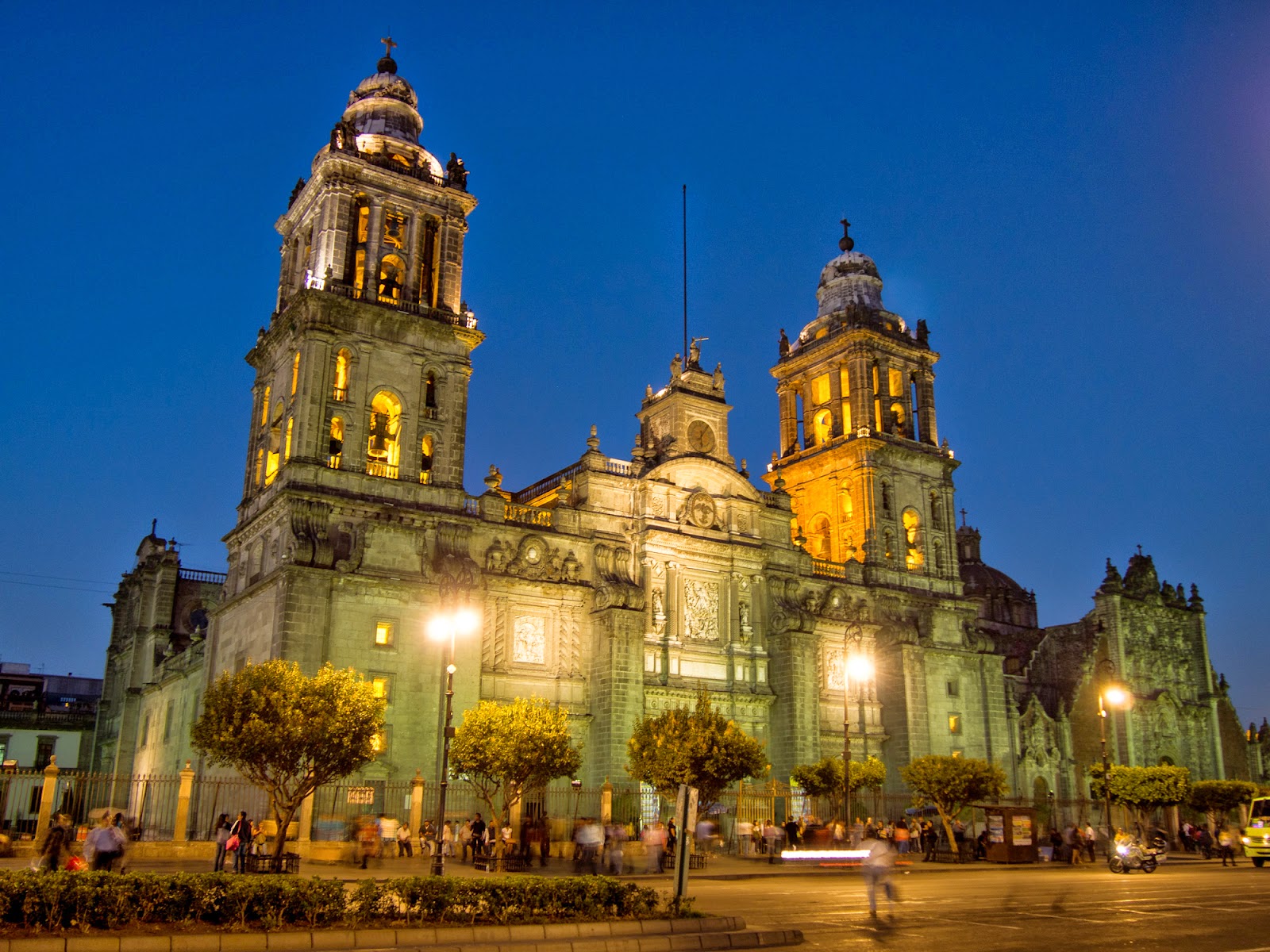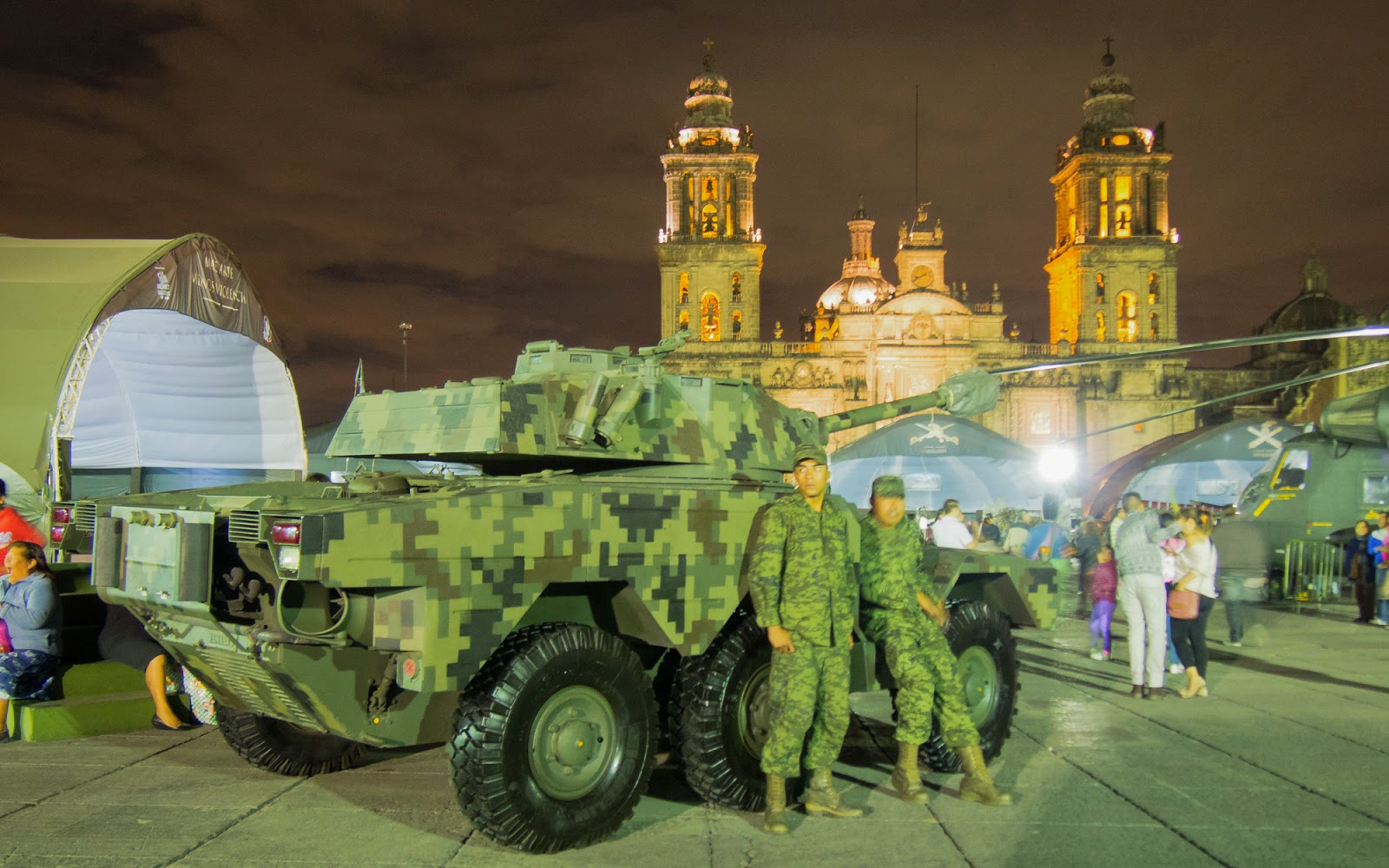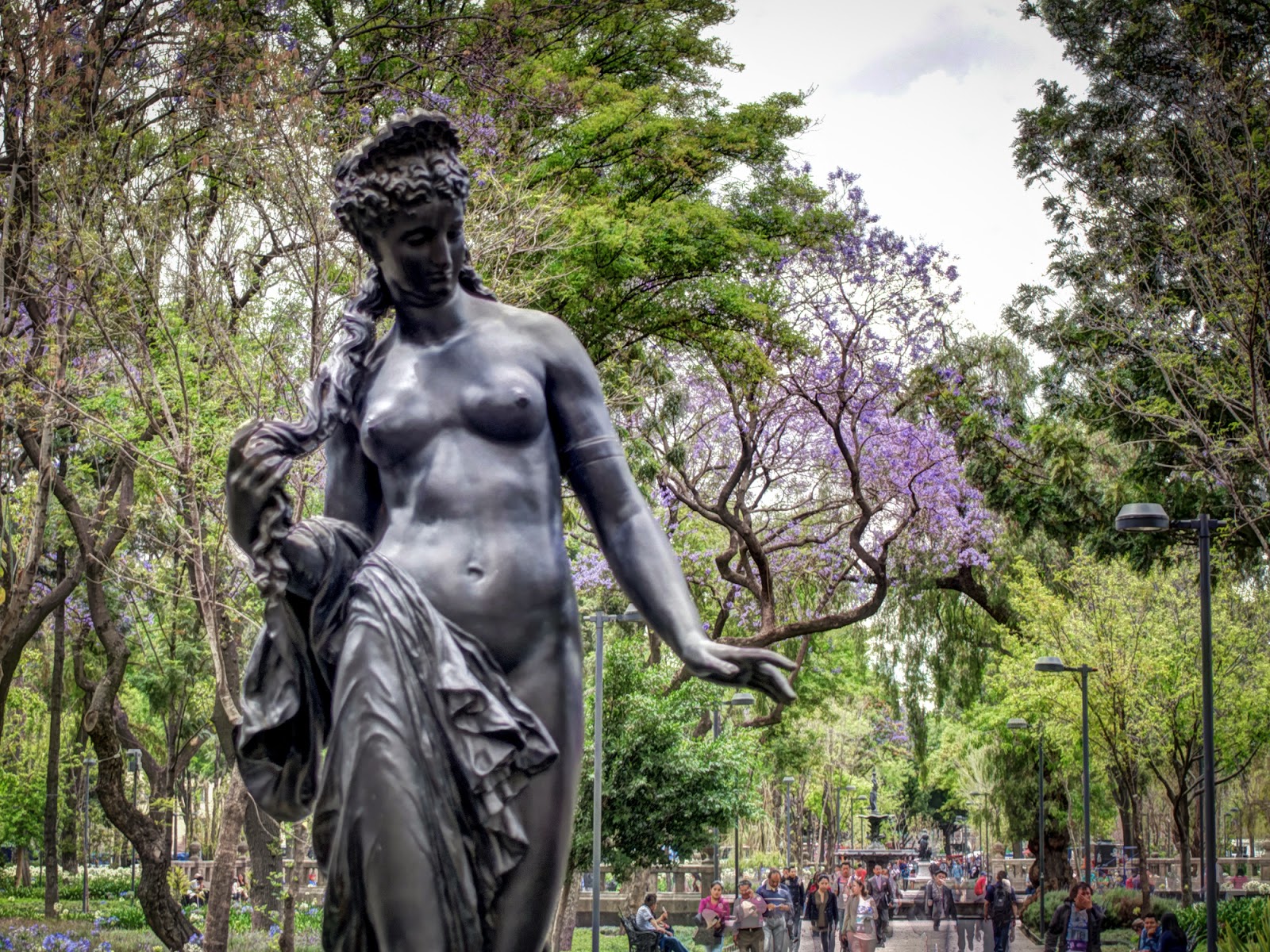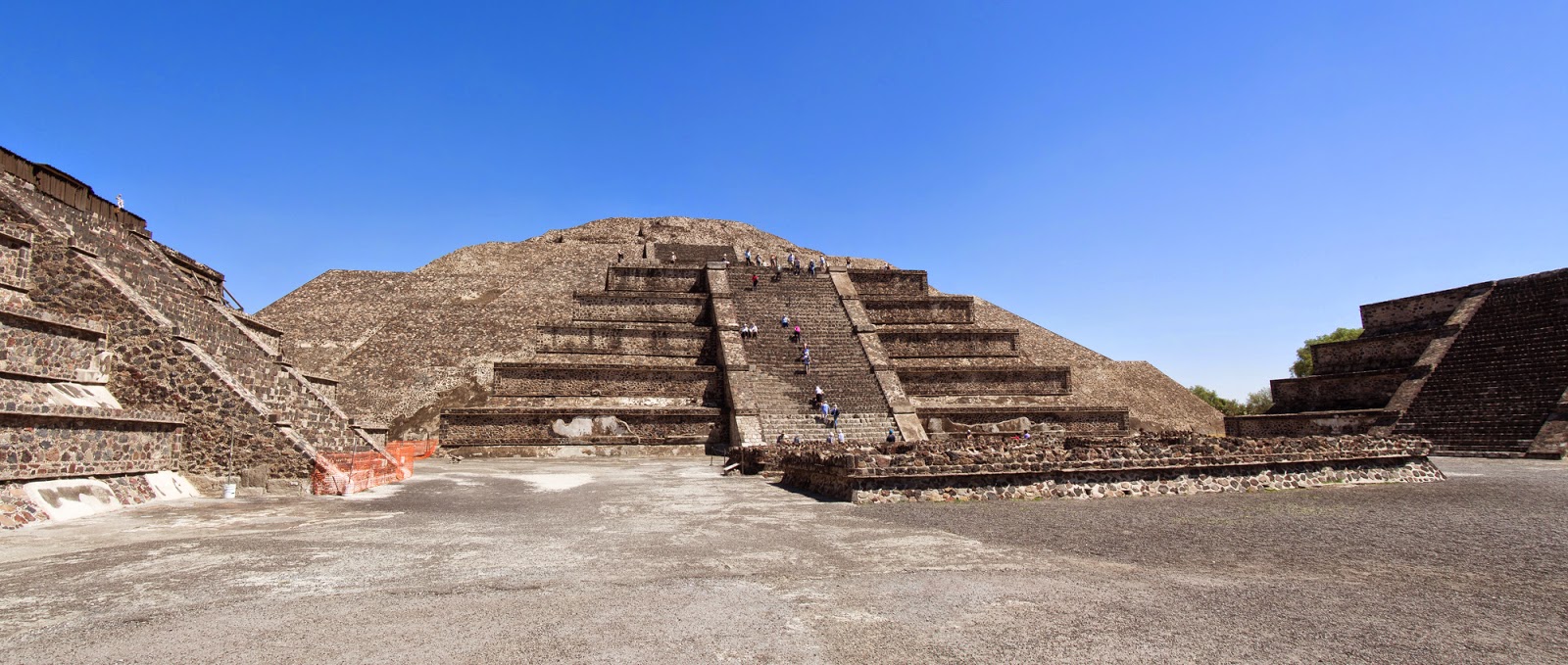Zocalo,
Mexico City's central square – one of the largest public squares in
the world – in a way, is the spiritual center of the whole country.
When Cortez governed from the overlooking palace, it was the heart
of New Spain. Before he marched upon it, it was the main square of
the Aztec capital. Modern Mexico City is a city build upon cities,
and physical fragments from each of its incarnations remain still.
The
service men on the inside of the show were as well armed as those on
the streets. The police and federal officers maintain a strong
visible presence most places I went, armed with shotguns and imposing
fully automatic weaponry. Given the numerous accounts of theft and
violent crime prevalent in Mexico City I've taken in, I was usually
happy to see them around.
I
poured him a welcoming shot of tequila and led him on a walking tour
of the Centro area (I went through the same motions on Monday, but
everything in Mexico City – EVERYTHING – is closed on Mondays).
We saw some of Diego Rivera's better known socialist murals in the
Secretary of Public Eductation building and in the National Palace.
We got a good look inside the beautiful Palacio de Bellas Artes, art
noveau on the outside and 30s art deco on the inside. We took a
stroll through Alemeda Park, which used to be the main market in the
Aztec city, and is now a rare green space in a city that's somewhat
monotone and grey compared to much elsewhere in Mexico. The green is
occasionally cut with the flower blossoms all over jacaranda trees,
which punctuate the city all over with an out-of-place seeming but
still soothing purple hue. We finished our stroll at Opera Bar, a
classy space where we sipped mezcal served with spiced orange slices,
and which sports a bullet hole left by Pancho Villa.
My
team of choice was composed of Diamante Azul, Titan, and Maximo. The
first two were lucadores of classic pedigree: old fashioned masks and
thick oily muscles. Maximo, on the other hand, was a flabby unmasked
wrestler with a pink mohawk, effeminately floppy wrists, and his
signature move was planting a smooch on his opponent's lips when he
had him cornered. The crowed loved Maximo and pleadingly chanted
“Beso! Beso!” if Maximo got ever close enough to lock lips.
My
team was decimated in round one by Scorpion Rey and his cohorts, a
villainous duo without masks dressed like cavemen. Given how wrecked
my wrestlers were, it was truly
unbelievable how they
were able to recover so swiftly and with such strength that they were
able to fight back with high flying kicks and throws enough to win
the two final rounds and send those goons back home.
 |
| Gigante Rojo y El Puno |
I
didn't catch the names of the wrestlers in the final one on one
round, but given the shouts from the spectators, I would guess their
names were Puto and Cabron.
The
next morning saw us on an early bus to Teotihuacan, a series of
native ruins featuring the second largest pyramid in the Americas.
Driving in the city's perimeter, you get a greater sense of just how
enormous Mexico City really is, and then just how many of its people
are impoverished. Once a native city of modest size built upon a
lake set island, the lake has now been long since drained and the
metropolitan area has swollen to over 20 million people. Far from
the the classical architecture of the central zone, the hills are
dense with small concrete boxes in a dull grey that mirrors that of
the low hanging clouds. On the undulating hills, the houses almost
seem as if they are growing organically but reduced to simple
geometry, like some kind of sad grey coral that only grows in 90
degree angles. The density of population in these spaces is
reportedly one person to every square meter. I was startled when it
occurred to me these communities weren't structurally so dissimilar
from those built up and down the hills of Guanajuato – these here
were merely devoid of color. That simple element can paint the
difference between a scene of joy and a scene of sorrow.
Eventually
as we passed along the road, the houses thinned out into clay colored
hills and patches of green cactus, and the stony tops of two great
pyramid pierce their way into view.
The
layout of Teotihuacan was planned cleverly in accordance with astral
movements and the four cardinal directions. The two main pyramids
are named after the sun and the moon and are each echoed by the
mountains they foreground as seen from the area's central plaza.
Running up the sides of several temples remain stone depictions of
gods: the feathered serpent form of Quetzalcoatl and a stone god
chiseled into right angles with binocular scopes for eyes.









No comments:
Post a Comment